Transcommunality
2002-2006
Trinidad and Tobago
Osebo´s Drums, MJ05, 2005. Keylemanjahro School of Arts and Culture, Cocorite, Trinidad and Tobago. Photo: Stefan Falke
Cheese Ball Queen & Red Devils. From the Spirit of Carnival, 2003. Queen portrayed by Crystal Folkes. Keylemanjahro School of Arts and Culture, Cocorite, Trinidad and Tobago. Photo: Stefan Falke
Cheese Ball Queen; The Spirit of Carnival MJ03, 20013. Portrayed by Jasmine Thomas-Girvan. Keylemanjahro School of Arts and Culture, Cocorite, Trinidad and Tobago. Photo: Stefan Falke
TT Flag and Red Devils; The Spirit of Carnival, 2003. Flag portrayed by Sterling. Keylemanjahro School of Arts and Culture, Cocorite, Trinidad and Tobago. Headpieces courtesy of Lesley-Ann Noel. Photo: Stefan Falke

Scarlet Ibis section. Osebo´s Drum, MJ05, 2005. Keylemanjahro School of Arts and Culture, Cocorite, Trinidad and Tobago. Photo: Stefan Falke
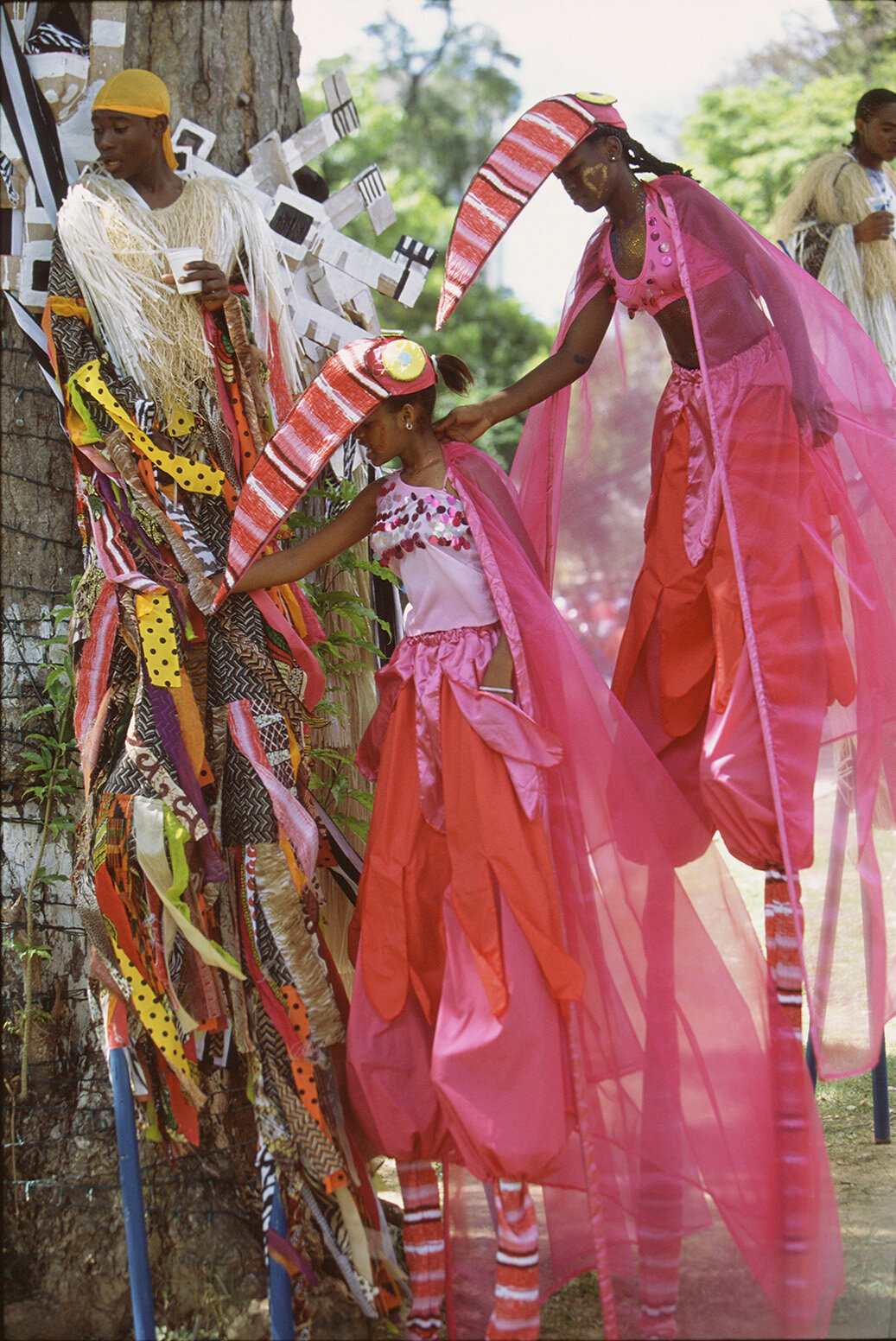
Scarlet Ibis and Shaggy Jumbie sections. Osebo´s Drum, MJ05, 2005. Keylemanjahro School of Arts and Culture, Junior Carnival, Port of Spain, Trinidad and Tobago. Photo: Stefan Falke

Queen Nyame, portrayed by Krystal Folkes. Osebo´s Drum, MJ05, 2005. Keylemanjahro School of Arts and Culture, Cocorite, Trinidad and Tobago. Photo: Stefan Falke

Preparing for Junior Carnival 2004. Birth and Rebirth, MJ04. Bug King and Bat portrayed by Barrow. Keylemanjahro School of Arts and Culture, Cocorite, Trinidad and Tobago. Photo: Stefan Falke
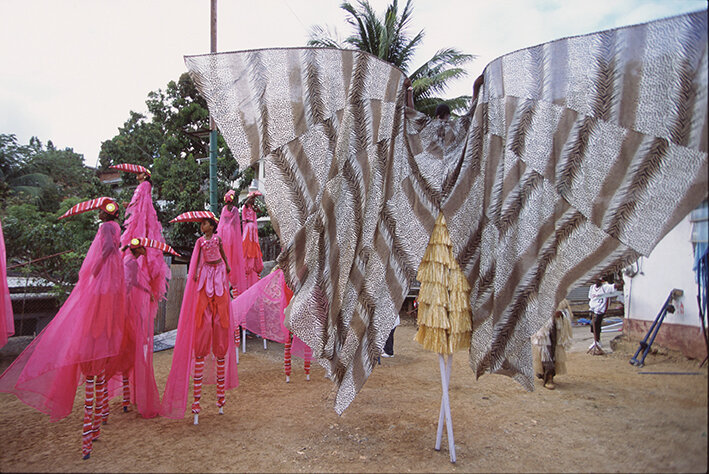
Scarlet Ibis and Bat, portrayed by Barrow. Osebo´s Drum, MJ05, 2005. Keylemanjahro School of Arts and Culture, Cocorite, Trinidad and Tobago. Photo: Stefan Falke

Rhia as Batimamselle Queen, for Birth and Rebirth, MJ04, 2004. Keylemanjahro School of Arts and Culture, Junior Carnival, Port of Spain, Trinidad and Tobago. Photo: Stefan Falke
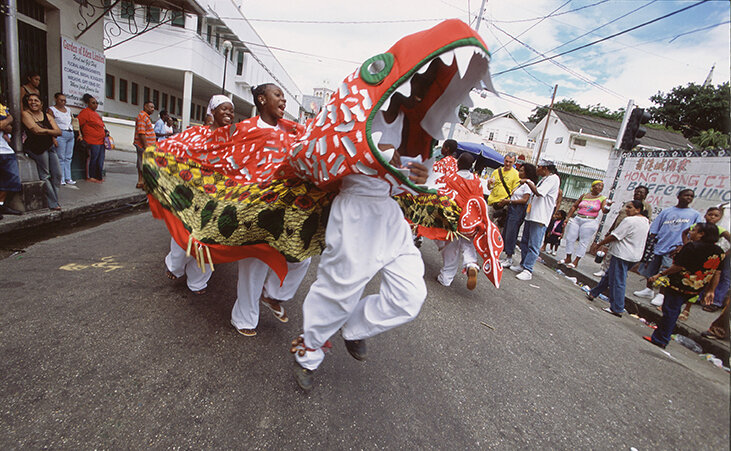
Quetzalcoatl the Plumed Serpent, The Spirit of Carnival, MJ03, 2003. Keylemanjahro School of Arts and Culture, Junior Carnival, Port of Spain, Trinidad and Tobago. Photo: Stefan Falke
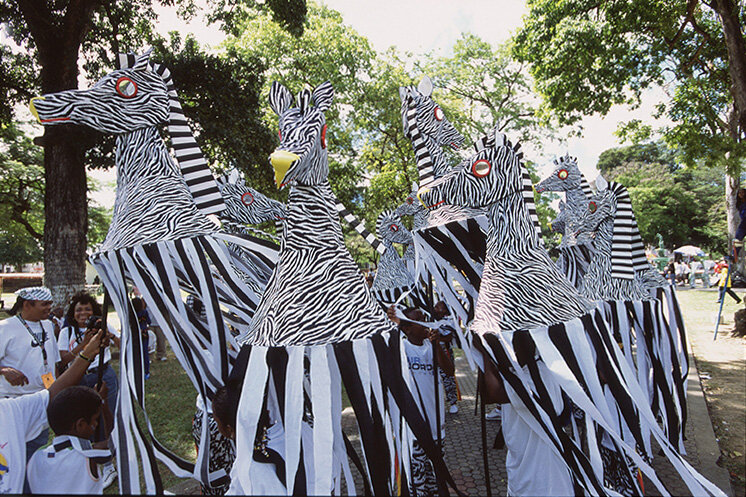
Zebra section; Osebo´s Drums, MJ05, 2005. Keylemanjahro School of Arts and Culture, Junior Carnival, Port of Spain, Trinidad and Tobago. Photo: Stefan Falke

Dancing to Africa, 2006. Keylemanjahro School of Arts and Culture, Junior Carnival, Port of Spain, Trinidad and Tobago. Photo: Stefan Falke
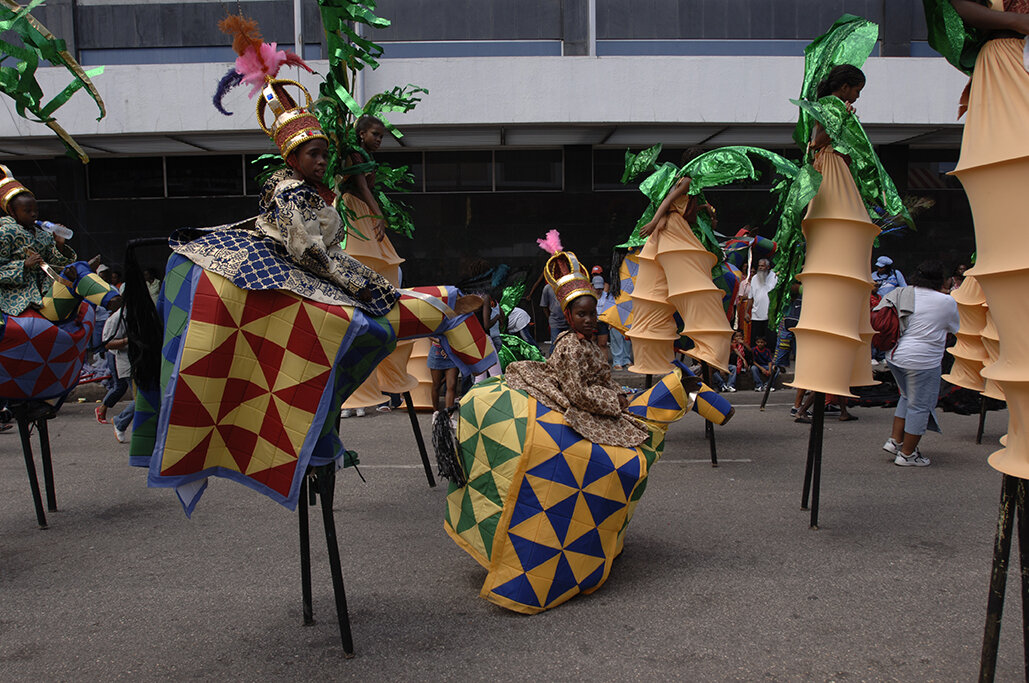
The Zarma and Palm section. Dancing to Africa, 2006. Keylemanjahro School of Arts and Culture, Junior Carnival, Port of Spain, Trinidad and Tobago. Photo: Stefan Falke
“Neutral Grounds: Laura Anderson Barbata’s Path to Social Practice & Performance” By Laura Blereau
Since the early 2000s, Anderson Barbata has created wearable sculptures for use by intergenerational stilt-dancers and ground performers in street theater settings. These works are designed to be worn as garments and accessories that correspond to specific narratives and characters imagined for outdoor festivals, annual celebrations, public interventions and protests, as well as educational workshops and demonstrations of intangible cultural heritage.
Social Practice & Relationships
Anderson Barbata’s wearable sculptures are the results of prolonged community relationships and, as her oeuvre has developed over two decades, these objects have traced a living world history of stilt-dancing artistry. Performers who wear the works she designs do so based on shared goals of live participation, and together they generate an immersive transcultural dialog with the audience and other performers. Over time, three very specific communities of tradition bearers for stilt-dancing have emerged as Anderson Barbata’s repeat collaborators:
1. 2002 - 2006, Trinidad and Tobago: Moko Jumbie Keylemanjahro School of Arts and Culture; founded by Glenn “Dragon” de Souza; Cocorite neighborhood in Port of Spain
2. 2007 - ongoing, United States: Brooklyn Jumbies; founded by Najja Codrington, trained in the Chakaba stilt-dancing traditions of Senegal, and Ali Sylvester, trained by Glenn “Dragon” de Souza in Trinidad; Bedford-Stuyvesant and Flatbush neighborhoods of Brooklyn, New York, New York
3. 2009 - ongoing, Mexico: Los Zancudos de Zaachila; led by Captain Don José Medoza Ortiz[1]; San Pedro neighborhood of Zaachila, Oaxaca
How did Anderson Barbata arrive at a methodology to craft the prolonged community relationships required for such dynamic partnerships? As early as 1992, the platforms of fiber arts and education increasingly appeared in her collaborations – such as G.R.A.S. in Trinidad and The Yanomami Paper Project in the Venezuelan Amazon, two social enterprises focused on ecologically sustainable hand papermaking.[2] Over many years, these activities yielded tools for sharing skills and traditions (including books, paper, drawings and instructional videos) while simultaneously increasing the cultural visibility of community participants. During this period Anderson Barbata came to understand art as a system of shared practical actions that have the capacity to increase communication around topics of cultural diversity and to create sites of human connection or belonging.
[1] At age 81, “Tio José” passed away on March 22, 2021, after leading his stilt-dancing community for over 60 years.
[2] Melissa Potter, Among Tender Roots (Chicago: Center for Book & Paper Arts, Columbia College, 2010).
Except from the introductory text for the exhibition Transcommunality at the Newcomb Art Museum of Tulane University, New Orleans.
“Neutral Grounds: Laura Anderson Barbata’s Path to Social Practice & Performance”
By Laura Blereau, April 2021
Leading up to Junior Carnival, 2003. The Keylemanjahro School of Arts and Culture, Laura Anderson Barbata and numerous collaborators create the characters for The Spirit of Carnival, MJ03.
Leading up to Junior Carnival, 2005. The Keylemanjahro School of Arts and Culture, Laura Anderson Barbata and numerous collaborators create the characters for Osebo´s Drum, MJ05.



